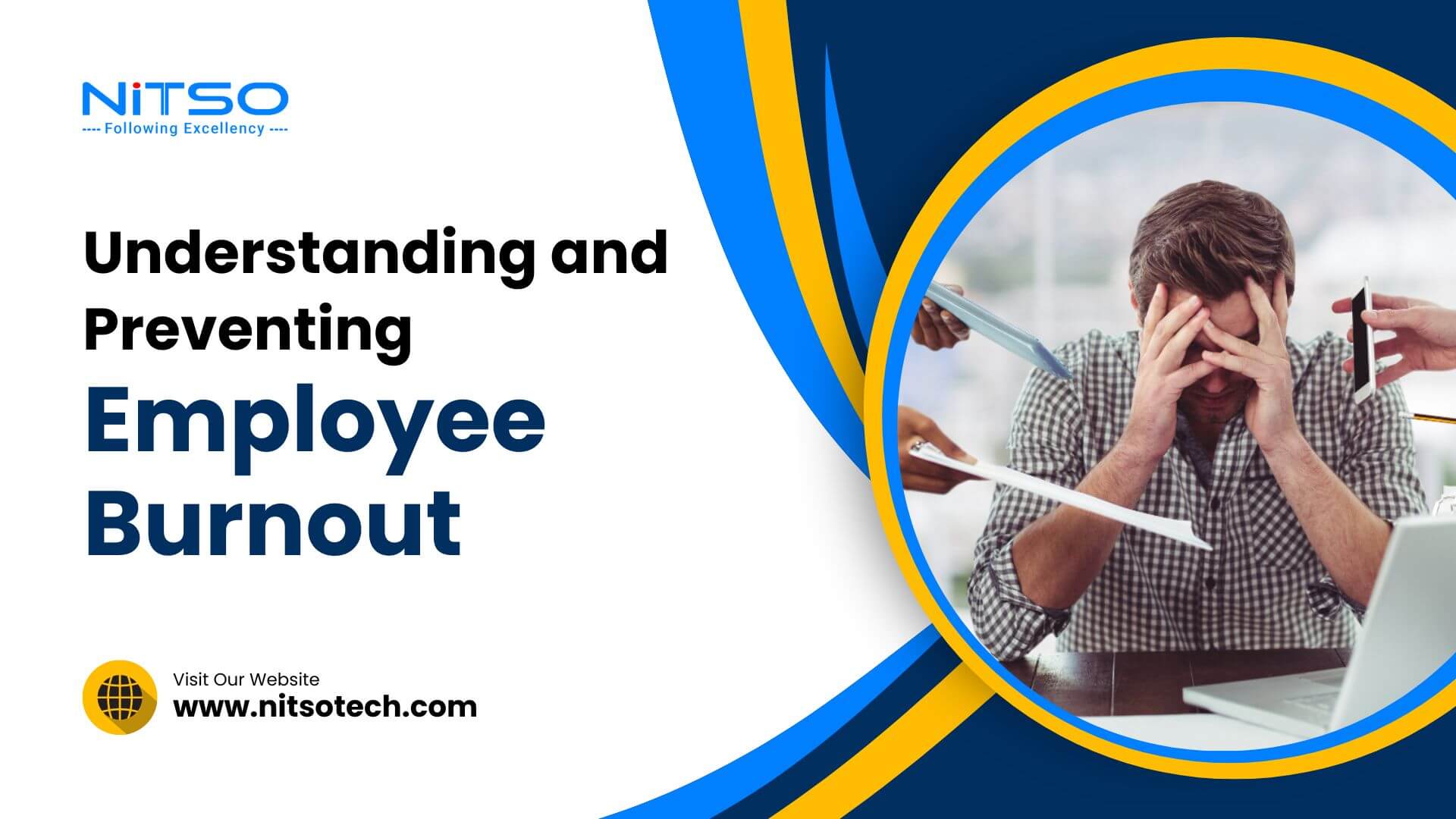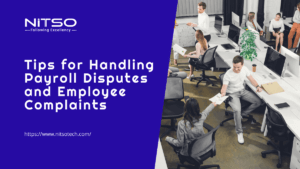The fast-paced nature of todays job market has resulted in a growing problem: employee burnout. From feeling overwhelmed by even the most basic tasks to decreased job satisfaction and engagement – which ultimately leads to poor retention rates – this condition leaves many organizations struggling with how best to motivate their workforce effectively. That said, it is possible to fight this issue by understanding what causes burnout in employees as well as recognizing its warning signs early on; this will enable managers or HR professionals alike to take preventative measures before it impacts negatively on their team members’ productivity levels or overall well being. With this goal in mind we’ll explore the latest research results along with proven strategies for preventing employee burnout.
Table of Contents
What is Employee Burnout?
Burnout arises for employees who endure prolonged exposure to workplace stress leading to physical exhaustion as well as mental and emotional fatigue. Employees become increasingly disappointed with the workplace during this state with little regard for how productive or professional they appear on the surface level; however, often withdrawing emotionally is one way how employees communicate their dissatisfaction with the workload given to them by management without words ever leaving lips! Burnout can affect anyone, regardless of their profession or seniority, and is recognized as a major occupational health issue. Thus warning signs like a lazy attitude towards task completion due to extreme tiredness coupled alongside quick irritation levels or difficulty concentrating should not be ignored because they could manifest as physical conditions such as headaches or stomach problems if not dealt with appropriately.
Why do you Need to Worry About Employee Burnout?
To maintain a happy and productive workforce, its necessary to address the issue of employee burnout head-on. Doing so will benefit employees’ overall health and job satisfaction while also promoting a positive corporate culture that attracts top talent. Keep reading for key points on why tackling employee burnout is so important:
- Reduced productivity: The effects of burnout on an employee can be damaging to a company’s productivity and success. Poor job performance originating from decreased motivation is one such consequence that businesses need to be aware of.
- Increased absenteeism and turnover: When workers feel overwhelmed and exhausted they’re more likely to take sick days or even consider quitting their job altogether. This presents a significant challenge for businesses, who must then cover the cost of recruitment and training while also dealing with lower productivity levels.
- Negative impact on mental and physical health: The detrimental effects of burnout are numerous – both physically and mentally. Anxiety, depression and heart disease, all these issues could trouble you if you let burnout take control. Thats why its so important to tackle this problem head on before it has long term implications for your wellbeing.
- Poor work-life balance: The relationship between burnout and poor work life balance is undeniable. Employees who experience burnout often struggle with overwhelming stress that affects not just their work but also their personal lives making achieving a healthy balance difficult.
- Negative impact on company culture: Burnout can create a negative workplace culture, where employees are disengaged and unproductive, and may also impact morale and teamwork.
7 Signs and Symptoms of Employee Burnout
Awareness about employee burnout is crucial since its not merely a minor problem but a serious issue for individuals’ well being and companies’ efficiency. The indications of this can range from physical exhaustion to emotional instability or unpredictable behavior patterns in the workplace environment. Hence building the ability to recognize such signals becomes imperative for alleviating this problem in time before it worsens beyond control.
1. Unfair Treatment at Work
Employee burnout often comes with the symptom of feeling unfairly treated at work. This could take several forms like being denied promotions or facing impractical work deadlines and loads. It could also involve the sense of being left out or unsupported by coworkers and managers.
2. Feeling Burned Out or Exhausted
Fatigue and exhaustion are amongst the most common symptoms experienced by people undergoing burnout. This debilitating condition takes a toll on both ones body and mind – leaving them physically drained and emotionally spent. Even with ample sleep those struggling with burnout feel forever tired – wrestling to concentrate on tasks at hand while fighting off insomnia as well as a general lack of energy.
3. Low Levels of Job Satisfaction
Low levels of job satisfaction often coincide with employee burnout. Those experiencing burnout may feel unfulfilled or detached from their work, which ultimately impacts motivation and productivity levels.
4. Decreased Productivity and Motivation
A drop in productivity and motivation levels often hints at burnout issues bubbling under the surface. People going through burnout may find it challenging to wrap up tasks on time or end up avoiding them altogether. Besides, they might undergo a loss of interest or excitement towards their workmanship.
5. Long Hours and Work-Related Stress
Burnout is a general issue among people who work for extended periods or encounter unbearable levels of stress in their employment. Insufficient resources or support only make matters worse as individuals struggle to manage their workload efficiently. Recognizing the significance of working conditions in determining employee well being can provide insights into tackling this serious problem that affects many industries worldwide.
6. Feeling Overwhelmed or Trapped in the Job
When facing burnout employees might struggle with feelings of being trapped and overloaded at work. From this perspective there may seem like too much needs to be done within very little time while struggling with not having anyone to turn for help. Consequently these sensations produce hopelessness and helplessness that serve only to magnify the effects associated with experiencing burnout in your job role.
7. Poor Work-Life Balance
When it comes to worker satisfaction and productivity achieving balance between work and home life is essential. When this balance is thrown off employees are at risk for experiencing various negative effects like stress and exhaustion that ultimately culminate in burnout. Furthermore this imbalance may cause significant physical illnesses such as chronic diseases or even immunity related problems impacting overall well being.
In order for organizations to effectively address the problem of burnout they must first be able to spot its indicative signs and symptoms. The promotion of employee wellness through preventative measures is key in developing a healthy work environment that encourages productivity.
What is the Link Between Employee Burnout and Mental Health?
Burnout among employees is linked to various negative outcomes such as reduced job performance and turnover rates and it can also affect their overall well being. Research further suggests that people who experience significant levels of burnout increase their risk for mental health disorders. Below are some examples of common conditions associated with workplace burnout:
Anxiety
Excessive worry, uneasiness, and fear signify the typical mental health condition of anxiety. Experts have found that individuals who suffer from high degrees of burnout tend to display amplified levels of anxiety.
Depression
Depression is a mental health disorder that is characterized by feelings of sadness, hopelessness, and worthlessness. Burnout amplifies the possibility of developing depressive symptoms even as those already dealing with it face heightened experiences.
Post-traumatic stress disorder (PTSD)
People can suffer from post traumatic stress disorder (PTSD) after experiencing trauma. Research reveals that individuals who encounter burnout are more susceptible to developing PTSD especially if they experienced any workplace related traumatizing events.
Substance abuse
Burnout can also increase the risk of developing substance abuse disorders. Individuals who are experiencing burnout may turn to drugs or alcohol as a way to cope with stress and emotional exhaustion.
Article you might be intrested in: Understanding the Benefits and Key Features of HR Software
The Cost of Employee Burnout
These days many workplaces are struggling with high levels of employee burnout – which has serious consequences for both staff members themselves as well as their employers’ finances. Companies with burnt out workers face reduced productivity (as well as negative effects on teamwork) along with greater absence levels than normal (either through sickness or attending work while ill). All of this adds up to lower profitability over time – something no business wants! So now we’ll explore how severe these effects are in practice while offering some suggestions on how to prevent or reduce burnout-related issues.
Decreased Productivity and Motivation
Burnout can have significant effects on an employee’s productivity levels as well as their motivation towards work in general. Feelings of exhaustion, cynicism or low efficacy happen when burnout occurs leaving employees with little to no energy or drive for work duties leading to delayed completion times for projects or missed deadlines overall reducing profitability within organizations.
High Levels of Absenteeism and Presenteeism
When workers experience burnout on the job it often results in issues with absenteeism and presenteeism levels among employees. Absenteeism describes instances where an employee fails to show up at the office due to issues such as illness; presenteeism is when an employee appears but fails so engage fully with their responsibilities such as task completion. Burnt out workers may therefore be inclined towards taking time away from their jobs by calling in sick or otherwise avoiding the workspace outright; if they do choose to attend even when exhausted however this can adversely affect productivity leading ultimately to decreased efficiency.
Increased Employee Turnover
One outcome of workplace burnout that deserves attention is its link to higher employee turnover rates – something that negatively impacts both individuals and organizations alike. When an employee feels burned out at work, quitting their job is more probable; this results in extra recruitment costs, extensive training processes for new hires, attrition-related losses in productivity levels while other employees cope with unmanageable workloads left behind by those who leave – among other things that harm overall efficiency levels across teams or departments at different companies worldwide.
Negative Impact on Team Members
The implications of burnout are not limited to individual employees; rather they spread to the entire team. When individuals experience this exhausting emotional state for an extended period of time, their involvement in productive collaboration dwindles down along with decreased efficiency levels. Such a decline could then lead to weakened teamwork and lower morale among colleagues.

How to Support Employees Experiencing Burnout?
As an employer or team member, it is essential to identify employees who are experiencing burnout and provide support and resources to help them recover. Here are some ways to support employees experiencing burnout:
Identifying Employees Who Are Experiencing Burnout
- Look for signs of burnout such as decreased productivity, absenteeism, and emotional exhaustion
- Consider conducting regular check-ins to monitor employees’ well-being
- Encourage employees to speak up if they are experiencing burnout or if they notice signs of burnout in others
Addressing Workplace Stressors
- Identify and address workplace stressors such as heavy workloads, lack of control, and poor leadership
- Promote work-life balance by encouraging employees to take breaks, use their vacation time, and avoid overworking
- Create a positive work environment by promoting inclusivity, diversity, and a culture of support and understanding
Providing Support and Resources
- Offer counseling services, therapy, or mental health support groups
- Provide access to stress-management resources such as meditation apps, relaxation techniques, or exercise classes
- Encourage employees to seek medical help if needed and provide health insurance coverage for mental health services
Encouraging Open Communication
- Create a safe and non-judgmental environment where employees can speak openly about their mental health and well-being
- Offer opportunities for feedback and encourage employees to share their thoughts and concerns
- Provide support and resources for employees who disclose mental health concerns or request help
Addressing issues of employee burnout is complex because it involves understanding multiple layers of influence: individual well being as well as the environment within which they are working. As such developing effective solutions requires adopting a holistic approach that encompasses areas like promoting healthy practices for maintaining work life balance; building positive workplace cultures; providing practical assistance like access to counseling services; creating opportunities for mutual support among peers; and encouraging openness so individuals feel comfortable sharing any concerns. By attending to these details organizations are motivated to support their employees’ mental health and in turn build more resilient and productive teams.
Article you might be intrested in: Understanding HR Executive Roles and Responsibilities
The Future of Employee Burnout
Organizations are concerned about the issue of employee burnout as it impacts not only the individual but also overall productivity. With an eye towards the future, several factors including trends in the workplace, advances in technology and new approaches to work will affect how businesses can tackle this problem head on.
Trends in Employee Burnout
Employee burnout has been on the rise in recent years, and the pandemic has only exacerbated the issue. Here are some of the trends we can expect to see in employee burnout:
- Increased workload and job demands due to remote work and economic uncertainty
- Lack of control and autonomy in work arrangements
- The blurring of work-life boundaries due to remote work
- High levels of stress and anxiety due to the pandemic and ongoing societal issues
The Role of Technology in Preventing Employee Burnout
Although technology is often accused of increasing employee burnout it also possesses the potential to prevent it and promote better health. Discover some ways that technology may aid in preventing burnout:
- Providing virtual mental health resources and support
- Offering digital tools for stress management and mindfulness
- Implementing AI-powered workload management and scheduling systems to reduce job demands
- Facilitating remote work arrangements and flexibility
The Potential Impact of Remote Work on Employee Well-being
Remote work has become a popular work arrangement due to the pandemic, but it also has the potential to impact employee well-being and contribute to burnout. Here are some potential impacts of remote work on employee well-being:
- Increased social isolation and loneliness
- Difficulty in setting work-life boundaries and unplugging from work
- The blurring of personal and professional spaces
- The need for self-discipline and motivation to stay productive and engaged
Conclusion
As more individuals are experiencing employee burnout than ever before this epidemic is impacting not only workers but also companies themselves. Recognizing signs indicating potential burnout is key in taking preventative actions against it. Prioritizing employee wellness within business environments leads to positive outcomes including increased levels of commitment productivity output overall accomplishments all around.
FAQs
What is workplace burnout?
Workplace burnout is a psychological syndrome that results from prolonged exposure to work-related stress. It is characterized by feelings of exhaustion, cynicism, and reduced professional efficacy. Burnout can affect anyone, regardless of their profession or seniority, and is recognized as a major occupational health issue.
What are the benefits of corporate Wellness?
There are many facts about corporate wellness programs that make them a worthwhile investment for employers looking to support their teams’ overall health and well-being, while also boosting the companys bottom line. By participating in such initiatives employees can enjoy decreased stress levels, greater opportunities for job fulfillment and boosted productivity which altogether contribute towards maintaining a healthy lifestyle.
What is more stressful: to be an employee or an employer?
Stress is an all too familiar presence in many workplaces today – an experience shared by both employees and employers alike. Yet its important to recognize that each group may have different sources of this pressure to contend with day in and day out. For workers themselves stressors can range from an excessive workload to worries over job stability to navigating difficult relationships with coworkers or higher ups within the organization. At the same time, those in management positions can also feel intense strain related to financial demands on their companys bottom line along with managing teams effectively while grappling with critical choices that could have significant impacts on the companys future success.
What is the burnout rate for accountants?
Recent findings suggest that those working in accounting are prone towards experiencing high levels of on the job stress leading towards symptoms of burnout. The culprit behind this trend is attributed towards various components within the career including extended working hours without appropriate breaks coupled with firm deadlines and considerable accountability pressure. While its not all doom and gloom – understanding these potential stressors related with being an accountant is a significant aspect to consider when considering this profession.
Do employers intentionally try to stress out the employees?
While it is unlikely that employers intentionally try to stress out their employees, some workplace cultures and practices may inadvertently contribute to high levels of stress. Factors such as excessive workload, unrealistic expectations, and poor communication can all contribute to employee stress and burnout.








0 Comments